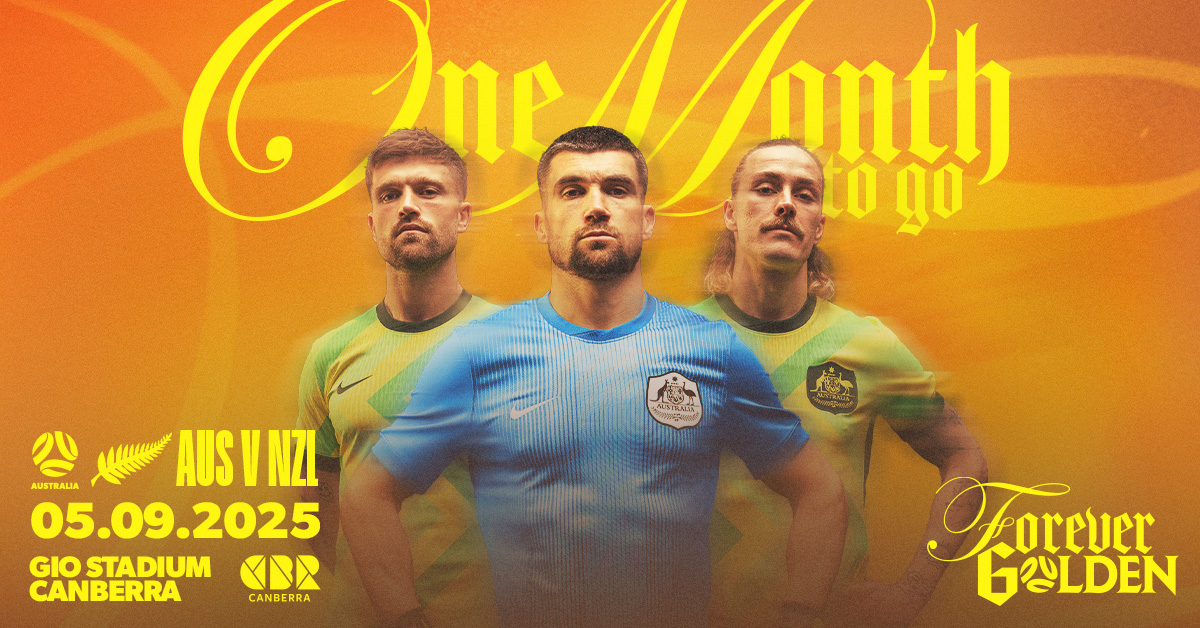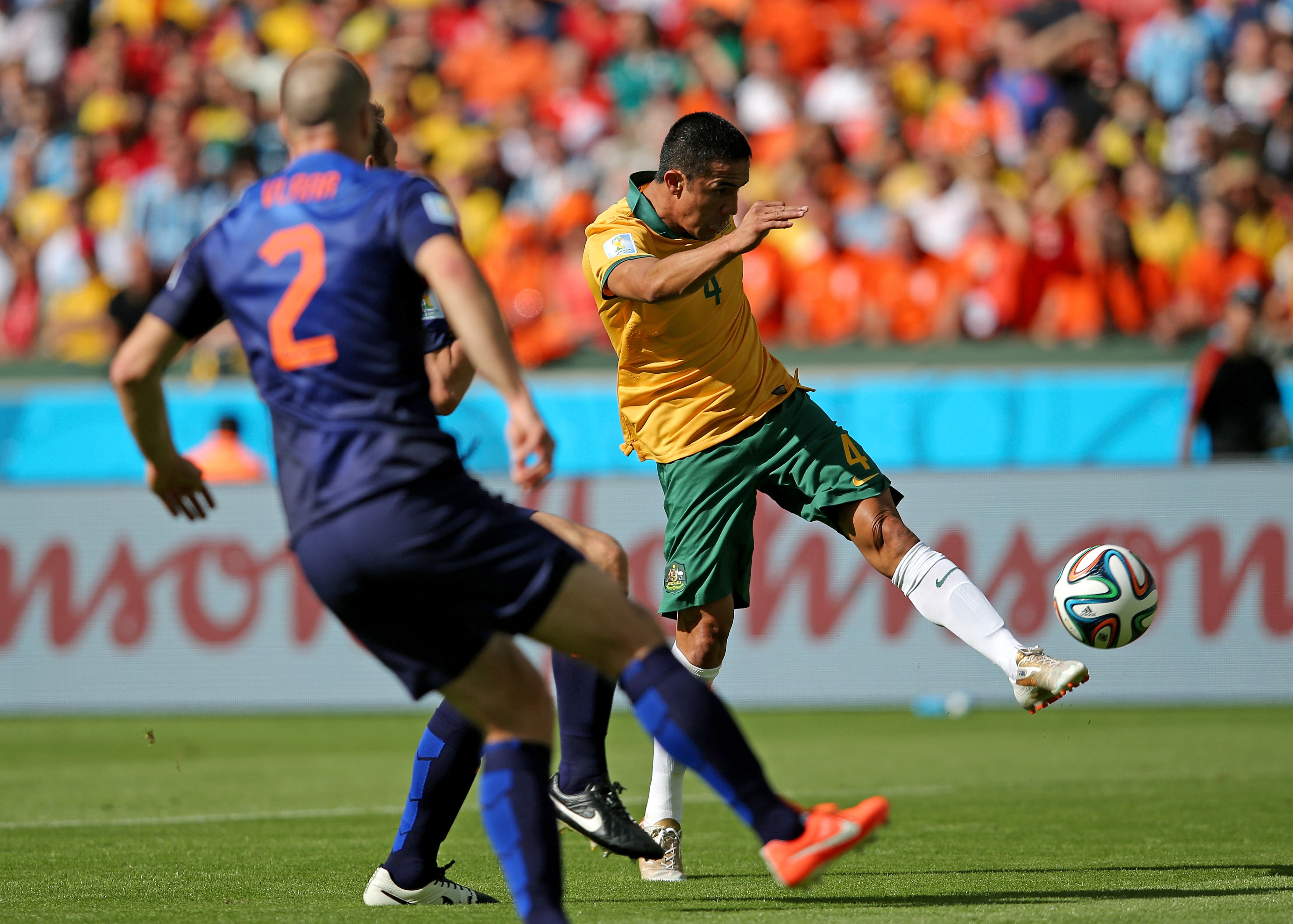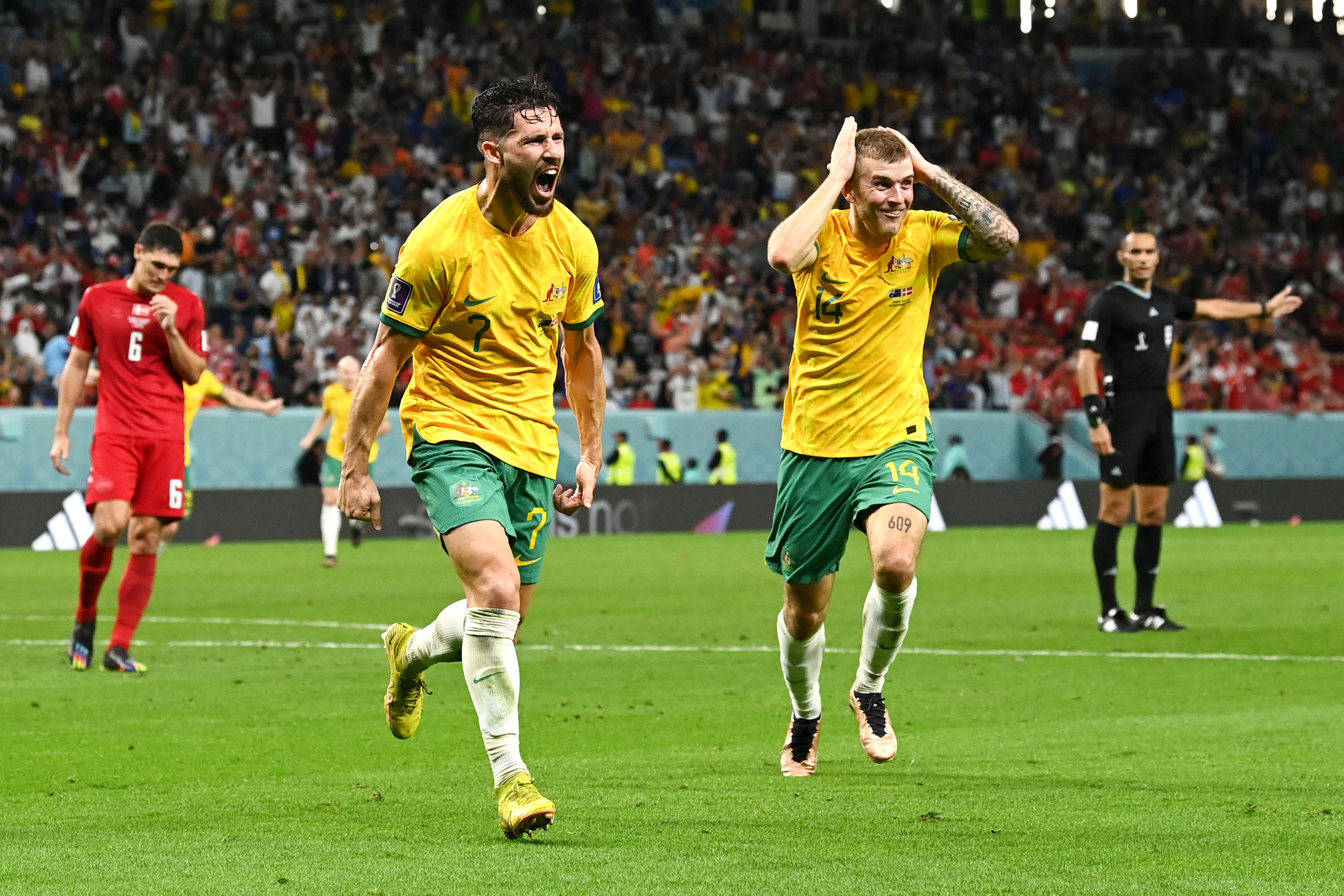It is one month to the day until the Subway Socceroos’ preparations for the greatest show on earth take a serious next step with the return of the ANZAC Soccer Ashes – the revival of a century-old tradition in a double header with New Zealand’s All Whites, home and away.

As we embark on celebrating the 20th anniversary of Australia’s continuous involvement at the FIFA World Cup, it is fitting that preparations should ignite with the revival of such an historic trophy as Australian football looks to continue to do better to embrace and respect the rich past that forms part of our football story and culture.
The origin story of the ANZAC Soccer Ashes, and the discovery of its trophy after a 70-year disappearance, is the stuff of legend and tradition, with links to Gallipoli and both nations’ first-ever ‘A’ internationals.
The trophy literally contains history, with ashes from cigars smoked by Australian captain Alex Gibb and New Zealand captain Campbell at a ‘cigar night’ following the nation’s meeting in Brisbane on June 9, 1923, inside the trophy, preserved, almost accidentally, over decades.
It is brilliant to see the ANZAC Soccer Ashes resurfaced, and a rivalry with New Zealand back on the calendar during such an important period, one that kicks off the countdown - and audition for places - for next year in the USA, Canada and Mexico.
To live the new moniker of being 'Forever Golden' is to start to link the story of the past, with the box office of the last 20 years and inspire a pride in the jersey that takes the Socceroos into tomorrow. A future at the World Cup in 2026 that will long be remembered as being secured by Aziz Behich’s – right foot!? – Thunderbolt against Japan, which took place exactly two months ago.
If that antique trophy belongs in a museum, then Behich’s audacious match winner belongs in the Socceroos’ pantheon of iconic moments alongside it. When qualification was sealed, Behich too clinched his spot in the Socceroos’ indelible storybook.
So, if we’re in the spirit of celebrating the game's past, who joins Behich in that pantheon; a Hall of Fame of our most celebrated heroics?
John Aloisi and Mark Schwarzer, the legends of November 16, 2005, have had a special place reserved on a pedestal in that catalogue.
Jimmy McKay’s 1973 goal against South Korea stood alone until Mark Bresciano’s clutch first-half strike against Uruguay in Sydney in 2005 set the stage for Schwarzer’s saves and Aloisi’s iconic strike, now a story from yesteryear that carries mythical status.
Indeed, an entirely new generation of fan has emerged who couldn't possibly understand the gravitas of that triumph, or the idea of a World Cup drought and the magnitude of the current streak. Indeed, it is why I recently published a non-fiction book for young readers (and their parents!) The Goals That Changed Australia – Stories From The Biggest Stage on Earth.
The next chapter written will include Behich’s unlikely but unbelievable strike, which had us in disbelief, ecstasy and relief all at the same time, adding to an iconic lineage of World Cup qualifying moments and pulsating story.

Holger Osieck’s Green and Gold needed Josh Kennedy to join the montage with his prodigious leap against Iraq in 2013 to seal a spot in Brazil while Ange Postecoglou’s captain courageous Mile Jedinak owned Australia’s qualifying fate in 2017 with a dead-ball hat-trick in Sydney against Honduras, a display that defied all logic given he played 180 minutes in four days across two continents, more than he had played all season until then due to injury.
Another great beard took centre stage in 2022 when Andrew Redmayne became a global sensation with his Grey Wiggle penalty antics against Peru, guiding the Socceroos to Qatar as the last team to qualify and vindicating one of the gutsiest coaching decisions in Australian sporting history, when Graham Arnold subbed off his captain Mat Ryan for Sydney FC’s Redmayne.
Writing The Goals That Changed Australia helped re-live what a rollicking modern story the Socceroos have put fans through as the story traverses through ‘CAHILL, CAHILL, TIM CAHILL HAS DONE IT AGAIN. WHAT A WONDERFUL MOMENT IN KAISERLAUTERN’ through to Mathew Leckie’s mazy, silky moment of individual brilliance that left Denmark floored in 2022.
What a ride. In 2006, it was Tim Cahill, then of Everton fame, who opened our Hall of Fame of World Cup moments when his brace notched Australia’s first goals and ignited the country’s maiden win at this level, while Harry Kewell, the golden boy of the Golden Generation, had the poise and technique to send Guus Hiddink’s side into the knockout stage with the equaliser in that 2-2 draw with Croatia, a match so wild, and ridiculous, it regularly features still on FIFA channels.
2010 was Brett Holman’s stage, the unlikely hero who silenced his critics with two goals in South Africa; an opportunistic tap-in against Ghana before a breathtaking, world-class lash from distance against Serbia.
For jaw-dropping moments, there is only one winner. 19 June 2014. Socceroos v Netherlands. Porto Alegre. On a stage with Robin van Persie, Arjen Robben, Memphis Depay and Wesley Sneijder, it was Cahill who stole the show. The audacity and self-belief (not to mention technique) he showed to thump Ryan McGowan’s cross home summed up Cahill’s ability to always deliver in his country’s biggest moments, and the fearlessness of this new-look Socceroos.

Heck, the goal was just about the goal of the World Cup, pipped by James Rodriguez’s equally outrageous strike for Colombia against Uruguay. It was not enough for the Socceroos to claim a point in a pulsating 3-2 defeat, but it was a game that put Postecoglou’s charges, and style of football, on show in front of the world and gave fans one last flurry of blows on a World Cup corner flag in celebration.
There were three Jedinak penalties between Cahill’s goal and the next strike from open play, so when Craig Goodwin stunned world champions France in Doha, it left a nation delirious. Fortunately, the lone goal in a heavy defeat to France was only the prelude to Mitchell Duke’s breakthrough winner against Tunisia, which set the stage for Mathew Leckie, who joined the pantheon with his moment of match-winning gumption.
The Melbourne City star twisted, turned, and made fools of the more highly coveted Danes to leave them and Tunisia in Australia’s wake in 2022 to make it to the Round of 16 for the first time since Germany, 2006. After three campaigns left in group stage wilderness, this was a moment that returned Australia to the top table, where the celebrations back home also put the nation firmly in the world’s eyes. Who said they don’t have a football culture down under?

What's your favourite? Everyone’s list will differ for personal reasons, and that’s the beauty of this kind of pub discussion. Is it Massimo Luongo or James Troisi from the 2015 AFC Asian Cup final, Australia's first major senior international trophy? One of the goals from the 3-1 boilover against England at Upton Park in 2003?
For aesthetics, Charlie Yankos’ 1988 Bicentennial Gold Cup howitzer against Argentina or Josip Skoko's freakish strike in front of 95,000 at the MCG against Greece in 2006? Aurelio Vidmar, tapping in from his brother Tony, against the Diego Maradona-inspired Argentina in a 1993 World Cup Qualifier at Sydney Football Stadium?
Do you squeeze in Ned Zelic’s 1992 Olympic qualifier individual brilliance against Netherlands, although technically an Olyroos goal?
Back to the present, though, and this incredible Hall of Fame of iconic moments is a reminder of the prize on the line over the coming months.
It is a cliché to say the race is on for positions for Tony Popovic’s World Cup squad, but the next few months, starting with the Trans-Tasman double header in Canberra and Auckland, is exactly that. An audition. History tells us so: the squad that gets Australia to the World Cup isn’t necessarily the one that makes it there.
From Mark Milligan and Michael Beauchamp in 2006, to Ange Postecoglou’s 2014 youngsters, and more recently, the likes of Andrew Nabbout and Daniel Arzani (2018) or Garang Kuol and Jason Cummings (2022) are reminders of the drama that awaits at the selection table.
Who will put their case forward on September 5 and 9? It might be someone we don't expect, dreaming of joining this illustrious list.
